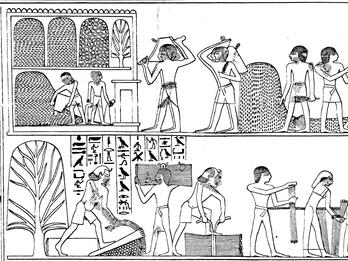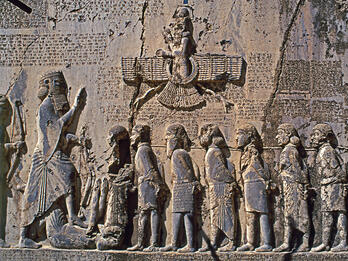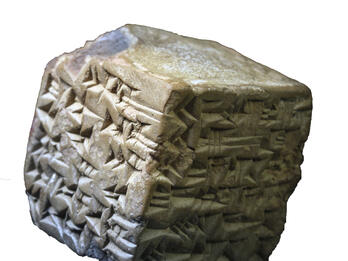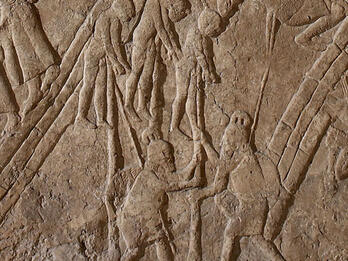Harvesting and Threshing in Egyptian Painting, from the Tomb of Pa-heri (New Kingdom)
Harvesting and threshing in Egyptian painting, from the tomb of Pa-heri (New Kingdom, 18th dynasty, 15th century BCE). In the lower register, on the right, reapers are followed by a woman and child gleaning the grain, while one of the reapers stops for a drink and, at the far right, a shed covers jars of water or wine. In the upper register (reading from the right), the harvested grain is carried to the threshing floor, where it is threshed and winnowed. It is then measured, placed in sacks, and carried to the granary. Leviticus and Deuteronomy prescribe agricultural allocations for the poor, including the gleanings. The book of Ruth describes Ruth as supporting Naomi and herself by gleaning in Boaz’s field.
Credits
Joseph John Tylor and Francis Llewellyn Griffith, from The Tomb of Paheri at El Kab (London: Egypt Exploration Fund, 1894), Plate III.
Published in: The Posen Library of Jewish Culture and Civilization, vol. 1.







